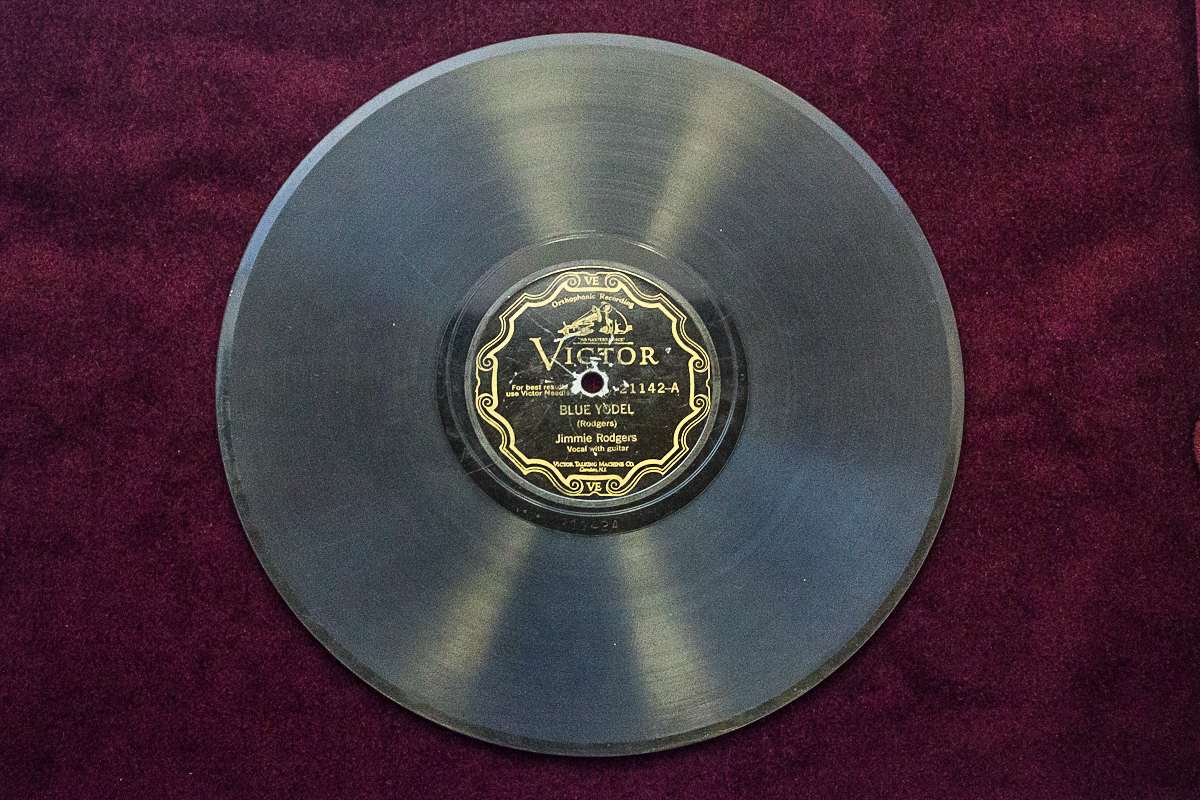I was booked to play and sing at an outdoor music festival in Indiana shortly after I learned to yodel. This was probably around 1983. I recall wandering around under the trees in a sparsely populated section of the festival grounds, practicing my yodeling prior to a performance on the stage. After a while I became aware that I was being watched by a young woman. She eventually spoke.
“What is that you are doing?” she asked. “You sound like a wounded animal.”
While “wounded animal” was not the effect I was going for, I was glad for some female attention. We smiled and had a conversation about yodeling.
Any conversation about yodeling – at least any conversation with me about yodeling – will inevitably get around to Jimmie Rodgers. Rodgers was a tubercular railroad worker who began a career as an entertainer in the late 1920s. No, Rodgers did not invent the yodel – that distinction probably goes to some wounded animal – but he went a long way toward defining and popularizing it.
He made his first recordings in Bristol, Tennessee, on August 4, 1927, and he brought his yodel with him. His recording of “Sleep, Baby, Sleep” – a sweet, traditional lullaby that had been recorded and performed many times previously – was infused with a stunningly high and clear yodel that launched his career and, by extension, launched the early country music recording industry. Bristol is now known as the Birthplace of Country Music largely as a result. His first “official” yodel song – his “Blue Yodel No. 1” – was released 91 years ago today on February 3, 1928.
A wounded animal, a lullaby, and a sick railroad worker. Who knew that such an unlikely combination of elements would lead to an internationally respected and financially fruitful style of entertainment!
Jimmie Rodgers was so popular and influential that he is commonly known as the “Father of Country Music.” He, along with Hank Williams, became the first two performers to be inducted into the Country Music Hall of Fame when that institution was formed in Nashville, Tennessee, in 1961. After his death from consumption, or TB, in 1933, his musical style lived on for many years. An entire generation of singers – men and women – did their best “Jimmie” to please a seemingly insatiable public appetite for Rodgers’ Blue Yodel. Ernest Tubb, Hank Snow, Jimmie Davis, Gene Autry, Bill Carlisle, Bill Monroe, and Lefty Frizzell were just a few of his many followers.
Once that trend faded in the late 1930s, fortunes were made embellishing and elaborating on the Rodgers yodel. Roy Rogers and the Sons of the Pioneers were among the first and most successful artists to take Rodgers’ simple and plaintive “yodel-ay-hee-tee” and turn it into a syncopated, multisyllabic Rubik’s Cube of vocalization. The imagination and vocal agility required to master this newer style of country yodeling made stars out of many singers. Elton Britt, Patsy Montana, Hal Lone Pine, Montana Slim (Wilf Carter), the Girls of the Golden West, and Slim Whitman were just a few of these.
Two sisters from rural Minnesota, Carolyn and Lorraine DeZurik, developed a unique yodeling style in the late 1930s that drew its inspiration from the animal sounds they grew up with on their family’s farm. Calling themselves the Cackle Sisters, they honed their complex and near-perfect duet yodeling along with hen cackles and other animal sounds to form a memorable, if somewhat whimsical, musical statement that must be heard to be believed.
The world changed forever after World War II, and the popularity of yodeling seemed to be a casualty of that war. Sure, yodeling lingered through the late 1940s, but it took on the mantle of nostalgia. This changed in 1949 when Hank Williams scored a huge hit with an old Tin Pan Alley song called “Lovesick Blues.” That song introduced the world to a man who was arguably the greatest country music singer and songwriter of all time. And he introduced the world to a new approach to the yodel. Rather than treating the yodel as a stand-alone passage of music separate from the rest of the song, Hank Williams incorporated the yodel into the song lyrics. “I got a feeling called the blu-OO-ues, since my baby said good-bye,” etc. The effect was electrifying!
https://www.youtube.com/watch?v=-Xu71i89xvs
That was 70 years ago. Today, country music yodeling is again viewed as a vestige of a bygone era, even as we wait patiently for the next wave of yodel-mania. There are certainly some fine yodelers out there – the Riders in the Sky, Wiley and the Wild West, Wanda Jackson, and a young singer from North Dakota and a recent graduate of East Tennessee State University named Kristi Galdade, also known as “The Yodeling Songbird of North Dakota.”
And I do my part. A song I wrote in 1984 called “A Little Yodel Goes a Long Way” remains my unofficial theme song. Even if it makes me sound like a wounded animal!


